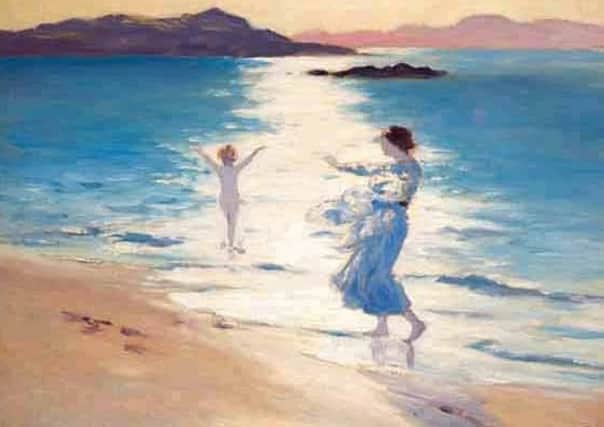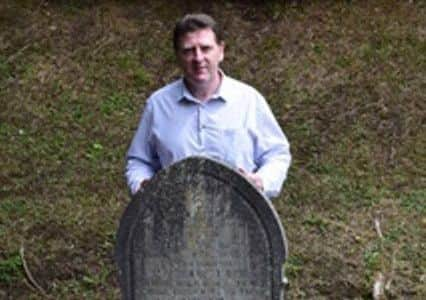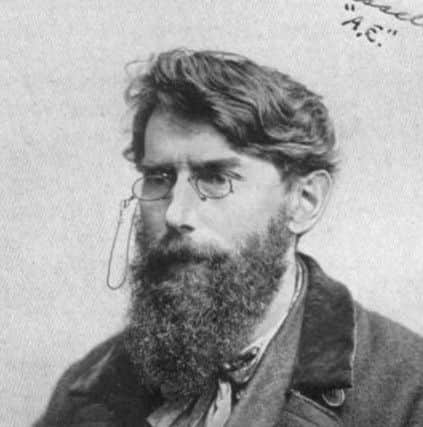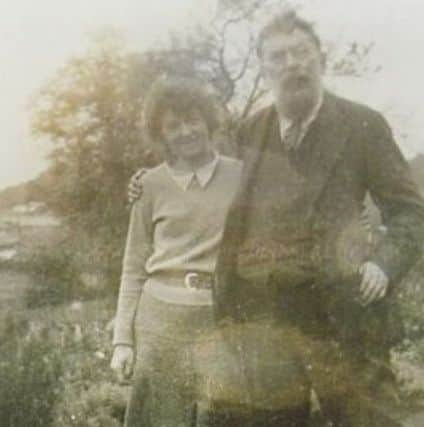Supercalifragilisticexpialidocious has unsung link with recently found grave


Whilst “supercalifragilisticexpialidocious” has more than occasionally echoed in my mind since Julie Andrews and Dick Van Dyke first intoned “um diddle diddle diddle um diddle ay” in 1964, I never knew that there was an Armagh-Lurgan connection!
The link was revealed to me when the Portadown based historian Brian McKernan told me he’d discovered a very important grave at the top corner of St Mark’s graveyard in Armagh.
Advertisement
Hide AdAdvertisement
Hide AdThe grave is the last resting place of the family of George William Russell (1867-1935), a hugely distinguished poet, painter, writer (and lots more besides!) who originally came from Lurgan.


Better known as ‘AE’ Russell, George was very friendly with the Australian author of Mary Poppins, Pamela Travers, during the last 10 years of his life.
“They holidayed together and he helped her to develop the characters, plots and stories which became the Mary Poppins books,” said Brian McKernan.
Having studied and researched AE Russell’s life and work for over a year Brian explained that “it was almost like discovering the true story of Saint Patrick”!
Advertisement
Hide AdAdvertisement
Hide AdThere’ll be more of Brian’s findings on this page in the near future, starting today with the newly-discovered gravestone, which lists Russell’s grandparents, parents, sister and aunt.


Brian explained that local historians have long wondered where Russell’s family had been buried “given that the family moved to Dublin when Russell himself was an 11-year-old”.
The key to unlocking the mystery first turned when Brian found that Russell’s grandfather had resided, towards the end of his life, at the Sheil’s Almshouse at Tower Hill in Armagh.
From there, a little further investigation and help from administrator Caroline Nesbitt revealed the Russell family’s headstone in nearby St Mark’s.
Advertisement
Hide AdAdvertisement
Hide AdBrian was “delighted to uncover the information” and to find that “although they lived their lives out in Dublin, Russell’s parents and sister returned to Armagh for burial”.


“This adds real strength to our picture of Russell as a ‘Northerner’,” added Brian.
Russell was a brilliant painter with his own unique style and a celebrated poet and close friend of W B Yeats.
“He was a leading political and economic commentator and reformer throughout Ireland’s revolutionary period,” Brian told me, “but unlike many of that generation, he remained a committed pacifist.”
Advertisement
Hide AdAdvertisement
Hide AdHe was recognised internationally for his expertise in rural economics by world leaders like President Roosevelt in the US and Ghandi in India.
Katherine Tynan, an expert on appraising the Dublin literary world, once said, “I have known in my time some few undoubted geniuses. In none of these have I found the beauty of genius as I have found it in George Russell. Of him, more than anyone else I have ever known, I would say, we shall never look on his like again.”
He was such a naturally gifted painter that he astounded everyone who saw him work.
“Without preparation, he could immediately, spontaneously, paint anything he saw,” explained Brian.
Advertisement
Hide AdAdvertisement
Hide AdHis work was incredibly imaginative, creative and original, described by experts as modern neo-Celtic with a romantic and nationalist view of the Gaelic past.
He painted seascapes, landscapes and portraits and he often depicted nation-building and Mystical Spiritualism.
AE held many exhibitions and became one of Ireland’s most renowned artists.
“He was the only Irish artist to be included among the headline artists exhibited at the New York ‘Armory Show’ in 1913,” said Brian, “which was arguably the most important art exhibition ever staged. The show aimed to bring Modern European art to the USA in order to awaken the American art scene.”
Advertisement
Hide AdAdvertisement
Hide Ad“Russell’s name sat alongside other great living artists including Degas, Renoir, Monet, Matisse and Braque,” Brian added, “as well as the then recently deceased greats like Cezanne, Van Gogh, Manet and Gauguin.”
AE’s poetry has been very favourably compared with Wordsworth, Keats, Shelley and other great poets due to the depth and range of symbolism, harmony and beauty evident in his work.
Brian explained that his poetry is highly complex “with subtle layers, resulting from a lifetime of study and contemplation of ancient philosophies and Irish mythology, and from his personal visionary experiences and spiritualism”.
He published more than 300 poems, and W B Yeats said his work was “the most delicate and subtle poetry any Irishman of our time has written”.
Advertisement
Hide AdAdvertisement
Hide AdAuthor Frank O’Connor hailed AE as “the father to three generations of Irish writers”.
He was also a practical economist and an acclaimed economic thinker, writing and publishing many texts that clearly outlined his ideas for generating progressive opportunities in Ireland.
He was enormously active in social and political affairs, in the theatre, and in the Theosophy Society with its fresh blend of Eastern philosophy, mysticism and the occult.
“He experienced spiritual visions all the way throughout his life,” Brian McKernan recounted, “while others, at the time, sought exhilaration from mystical philosophies and occultism, he was seeking wisdom and explanations or confirmations to explain what he was truly experiencing.”
Advertisement
Hide AdAdvertisement
Hide AdAfter his death in England in 1935, AE’s body was returned to Dublin and lay in state in Plunkett House, on Merrion Square. His funeral service was held in St Patrick’s Cathedral, before it led a mile-long cortege to Mount Jerome cemetery for burial.